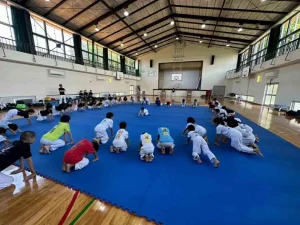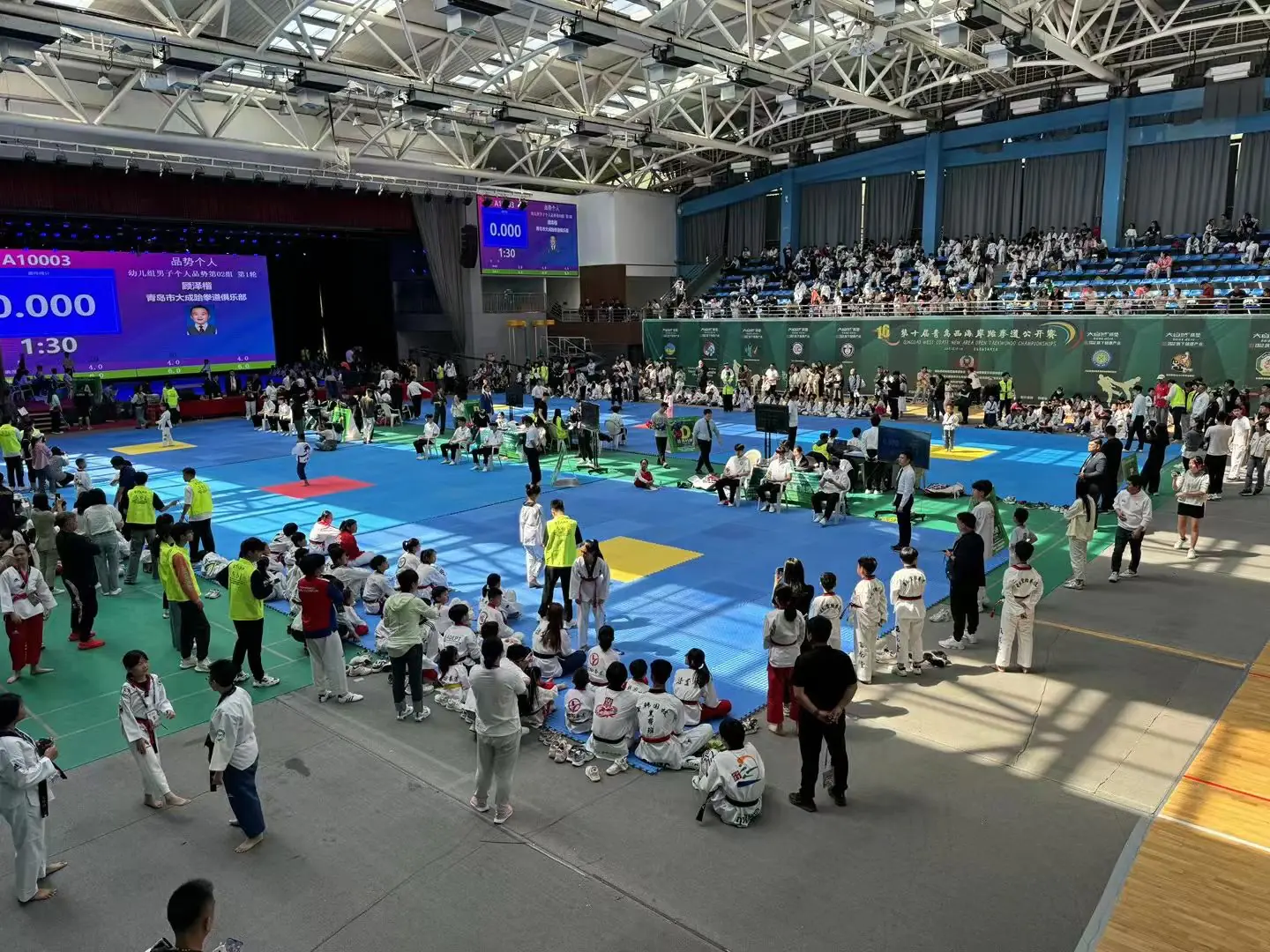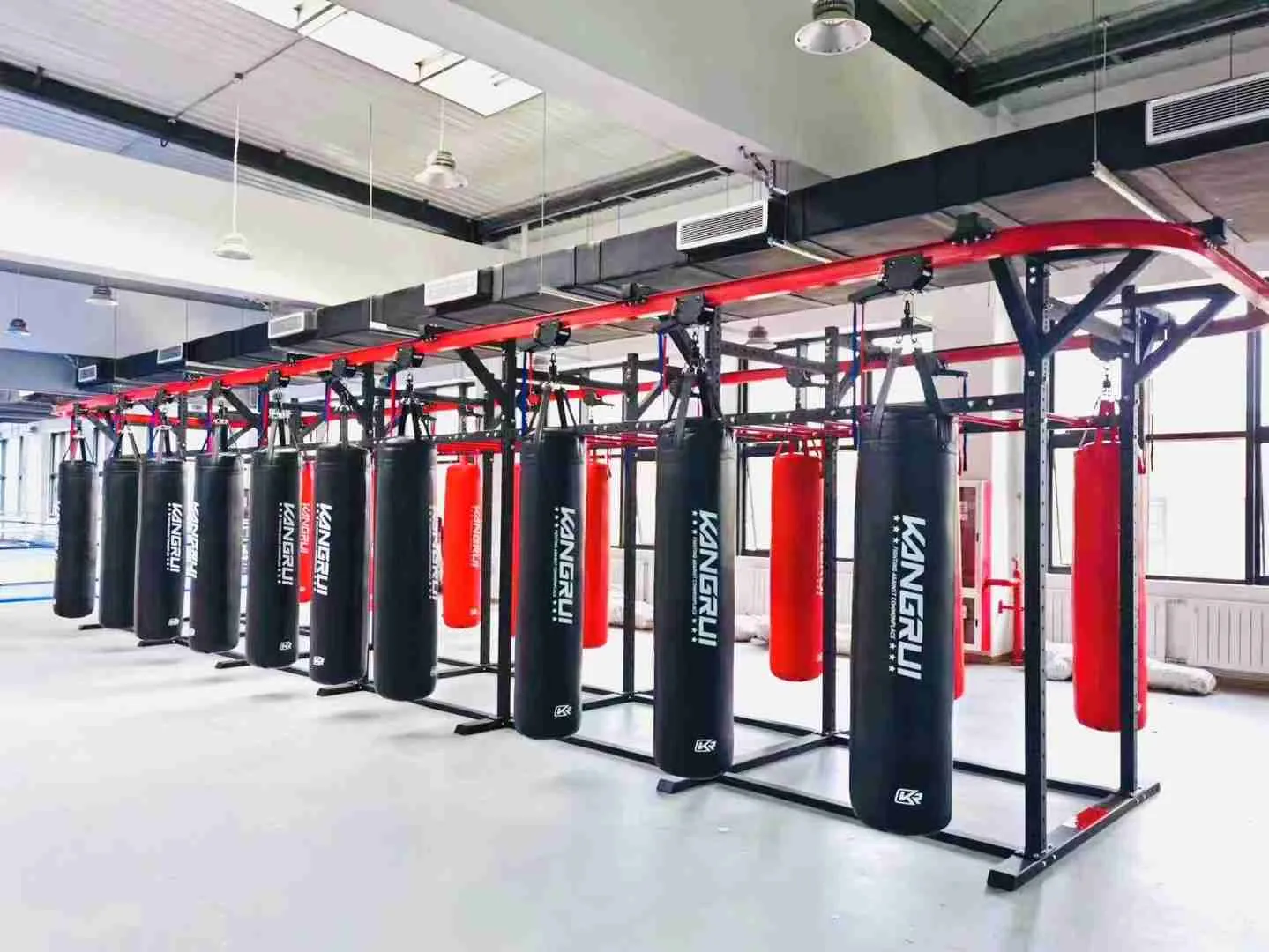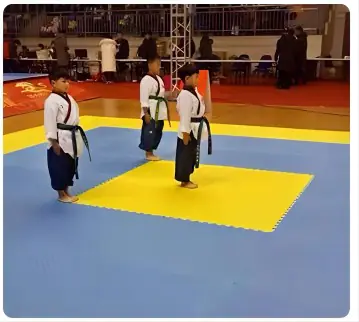Embarking on a journey through the martial arts industry unveils a dynamic landscape shaped by evolving taekwondo practices, emerging combat sports, and innovative martial arts studios. This market research report delves into the latest industry trends, providing invaluable industry statistics and insights for taekwondo clubs, martial arts schools, gyms, and other combat sports enthusiasts. Understanding these trends is essential for staying competitive and fostering growth in today’s vibrant martial arts community.

What Are the Current Industry Statistics in the Martial Arts Sector?
The martial arts industry has witnessed significant growth over the past few years. According to recent industry statistics, the global market size is projected to reach $214 billion by 2027, growing at a CAGR of 8.5% from 2020 to 2027. This surge is attributed to the increasing popularity of martial arts for fitness, self-defense, and competitive sports.
Key Statistics:
- Number of Martial Arts Practitioners: Over 100 million worldwide.
- Economic Impact: Martial arts contribute significantly to the economy through martial arts studios, equipment sales, and events.
- Demographic Trends: A rise in participation among youth martial arts enthusiasts, driven by the emphasis on discipline and physical fitness.
These statistics highlight the robust and expanding nature of the martial arts industry, making it a lucrative field for martial arts studios and taekwondo clubs.
How Is Taekwondo Shaping the Martial Arts Industry Trends?
Taekwondo, a prominent Korean martial art, plays a pivotal role in shaping martial arts industry trends. Its emphasis on high, fast kicks and dynamic techniques appeals to a broad audience, from children to adults seeking self-defense and fitness.
Influence of Taekwondo:
- Olympic Recognition: Taekwondo’s inclusion in the Olympic Games has elevated its status, attracting more practitioners and increasing its global footprint.
- Technology Integration: Modern taekwondo training incorporates advanced martial arts training equipment, enhancing learning and performance.
- Competitive Growth: The rise of mixed martial arts (MMA) has integrated taekwondo techniques, expanding its application in various combat sports.
Taekwondo’s adaptability and global appeal continue to drive innovations and growth within the martial arts industry.
What Makes Taekwondo a Popular Martial Art Choice?
Several factors contribute to taekwondo being a popular martial art choice among individuals and institutions alike.
Reasons for Popularity:
- Accessibility: Taekwondo is suitable for all age groups and fitness levels, making it an inclusive martial art.
- Structured Progression: The belt system provides clear milestones, motivating practitioners to advance through ranks.
- Comprehensive Training: Combines physical conditioning with mental discipline, fostering holistic development.
- Self-Defense Skills: Emphasizes practical techniques for personal safety, appealing to those interested in self-defense.
These attributes make taekwondo an attractive option for martial arts schools and gyms aiming to offer diverse and effective training programs.
How Do Martial Arts Studios Thrive in Today’s Market?
In a competitive landscape, martial arts studios must adopt strategic approaches to thrive. Understanding martial arts industry trends is essential for sustainable growth and success.
Strategies for Success:
- Diverse Offerings: Incorporating various martial arts styles like taekwondo, karate, and jiu-jitsu to attract a wider audience.
- Community Engagement: Building a strong community through events, workshops, and social media to foster loyalty.
- Quality Instruction: Investing in certified instructors ensures high-quality training and enhances the studio’s reputation.
- Flexible Membership Plans: Offering adaptable membership options caters to different needs and schedules, increasing accessibility.
By aligning with industry trends and focusing on quality and community, martial arts studios can achieve remarkable growth and retention rates.
What Are the Key Statistics Driving the Martial Arts Industry?
Understanding the key statistics is crucial for comprehending the dynamics of the martial arts industry. These metrics provide insights into market size, growth drivers, and emerging opportunities.
Important Metrics:
- Market Size and Growth: The martial arts industry is expanding globally, with significant growth in regions like Asia and North America.
- Participation Rates: Increasing participation in youth martial arts programs contributes to the industry’s expansion.
- Revenue Streams: Primary revenue comes from martial arts studios, equipment sales, and competitions.
- Consumer Demographics: A diverse demographic, including children, adults, and seniors, engages in various martial arts disciplines.
These statistics highlight the robust nature of the martial arts industry, emphasizing its potential for continued growth and innovation.
How Has the Martial Arts Industry Grown in the United States?
The martial arts industry in the United States has experienced substantial growth, influenced by cultural integration, media exposure, and the rising popularity of combat sports like MMA.
Growth Factors:
- Cultural Popularity: Hollywood films and celebrity endorsements have popularized taekwondo and other martial arts.
- Health and Fitness Trends: Increasing awareness of physical fitness has led more individuals to enroll in martial arts training.
- Diverse Offerings: The availability of various martial arts styles caters to different interests and skill levels.
- Economic Contributions: The industry contributes billions to the U.S. economy through martial arts studios, equipment manufacturing, and events.
According to IBISWorld, the martial arts industry in the United States has grown consistently, with a projected annual growth rate of 5.2% over the next five years.
What Are the Latest Trends in Youth Martial Arts?
Youth martial arts continue to evolve, influenced by societal changes, educational priorities, and technological advancements.
Emerging Trends:
- Integrated Curriculum: Combining martial arts training with academic and life skills development.
- Technology Use: Incorporating apps and online platforms for training, progress tracking, and virtual classes.
- Inclusive Programs: Designing programs that cater to children with diverse abilities and backgrounds.
- Focus on Wellness: Emphasizing mental health, mindfulness, and stress management alongside physical training.
These trends ensure that youth martial arts remain relevant, engaging, and beneficial for the younger generation.
How Do Business and Revenue Data Reflect the Martial Arts Industry’s Success?
Analyzing business and revenue data provides a clear picture of the martial arts industry’s performance and success metrics.
Revenue Insights:
- Subscription Models: Martial arts studios increasingly adopt subscription-based models, ensuring steady revenue streams.
- Merchandise Sales: Selling uniforms, protective gear, and accessories boosts overall revenue.
- Event Hosting: Organizing competitions and workshops generates additional income and enhances brand visibility.
- Franchise Opportunities: Expanding through franchising allows martial arts studios to scale rapidly and increase market share.
IBISWorld reports that the martial arts industry in the United States generates over $10 billion annually, highlighting its significant economic impact.
What Are the Top Martial Arts Styles in the Current Market?

The martial arts industry offers a diverse array of styles, each with unique techniques and philosophies. Understanding the top martial arts styles helps practitioners and studios cater to market demand effectively.
Leading Styles:
- Taekwondo: Renowned for its high kicks and dynamic movements, appealing to a broad audience.
- Brazilian Jiu-Jitsu (BJJ): Focuses on ground fighting and submission holds, popularized by MMA.
- Karate: A traditional martial art emphasizing striking techniques and discipline.
- Muay Thai: Known as the “Art of Eight Limbs,” utilizing punches, kicks, elbows, and knees.
- Kung Fu: A diverse range of Chinese martial arts, each with distinct techniques and forms.
Table: Top 5 Martial Arts Styles and Their Features
| Martial Art | Key Features | Popularity Factors |
|---|---|---|
| Taekwondo | High, fast kicks; Olympic sport | Accessibility; competitive appeal |
| Brazilian Jiu-Jitsu | Ground fighting; submission holds | MMA integration; effectiveness |
| Karate | Striking techniques; discipline | Traditional appeal; structured ranks |
| Muay Thai | Comprehensive striking; clinch work | Combat effectiveness; fitness benefits |
| Kung Fu | Diverse styles; fluid movements | Cultural richness; varied techniques |
These martial arts styles dominate the market due to their distinct advantages and widespread appeal.
How Are Martial Arts Schools Adapting to Industry Trends?
Martial arts schools must stay attuned to industry trends to remain competitive and meet the evolving needs of their students.
Adaptation Strategies:
- Hybrid Classes: Combining in-person and online training to offer flexibility and accessibility.
- Specialized Programs: Introducing classes focused on self-defense, fitness, or competitive training to attract diverse clientele.
- Enhanced Marketing: Utilizing digital marketing strategies, including social media and SEO, to reach a broader audience.
- Community Building: Creating a strong sense of community through events, partnerships, and member engagement initiatives.
By embracing these strategies, martial arts schools can effectively navigate the martial arts industry trends and foster sustained growth.
Frequently Asked Questions
What are the primary benefits of practicing taekwondo?
Practicing taekwondo enhances physical fitness, improves flexibility and strength, fosters discipline, and provides effective self-defense skills. It also boosts mental well-being by reducing stress and increasing confidence.
How can martial arts studios increase their membership base?
Martial arts studios can increase their membership by offering trial classes, creating referral programs, leveraging social media marketing, providing diverse class offerings, and maintaining a welcoming and inclusive environment.
What equipment is essential for a taekwondo school?
Essential equipment for a taekwondo school includes uniforms (dobok), protective gear (headgear, mouthguards, chest protectors), training pads, punching bags, kicking shields, and mats for training and sparring.
How has the COVID-19 pandemic affected the martial arts industry?
The COVID-19 pandemic led to a temporary decline in in-person training sessions, prompting many martial arts schools to adopt online classes and hybrid training models. It also accelerated the integration of technology in training and management processes.
What are the latest trends in the martial arts industry?
Latest trends include the integration of technology in training, emphasis on wellness and mental health, diversification of class offerings, increased focus on inclusivity, and the rise of hybrid training models combining in-person and online sessions.
Key Takeaways
- Industry Growth: The martial arts industry is experiencing robust growth, with significant increases in participation and revenue.
- Taekwondo’s Influence: Taekwondo plays a crucial role in shaping industry trends, driven by its Olympic status and integration into MMA.
- Popularity Factors: Accessibility, structured progression, comprehensive training, and self-defense skills make taekwondo a popular martial art choice.
- Studio Success: Martial arts studios thrive by diversifying offerings, engaging communities, maintaining quality instruction, and offering flexible memberships.
- Key Metrics: Understanding market size, participation rates, and revenue streams is essential for navigating the martial arts industry.
- Youth Engagement: Trends in youth martial arts emphasize integrated curricula, technology use, inclusivity, and wellness.
- Business Strategies: Subscription models, merchandise sales, event hosting, and franchising are key revenue drivers.
- Top Styles: Taekwondo, BJJ, Karate, Muay Thai, and Kung Fu dominate the market due to their distinct advantages and appeal.
- Adaptation: Martial arts schools must adapt to trends by offering hybrid classes, specialized programs, enhanced marketing, and community-building initiatives.
- Continuous Innovation: Embracing industry trends and leveraging data-driven strategies ensures sustained growth and success in the martial arts industry.
For more insights and top-quality martial arts supplies, visit Sports Good Manufacturer and explore our Martial Arts Mats Collection.

This article is optimized for SEO with relevant internal links and structured formats to enhance visibility and engagement. For more detailed guides and product information, visit Sports Good Manufacturer.
[/section]
